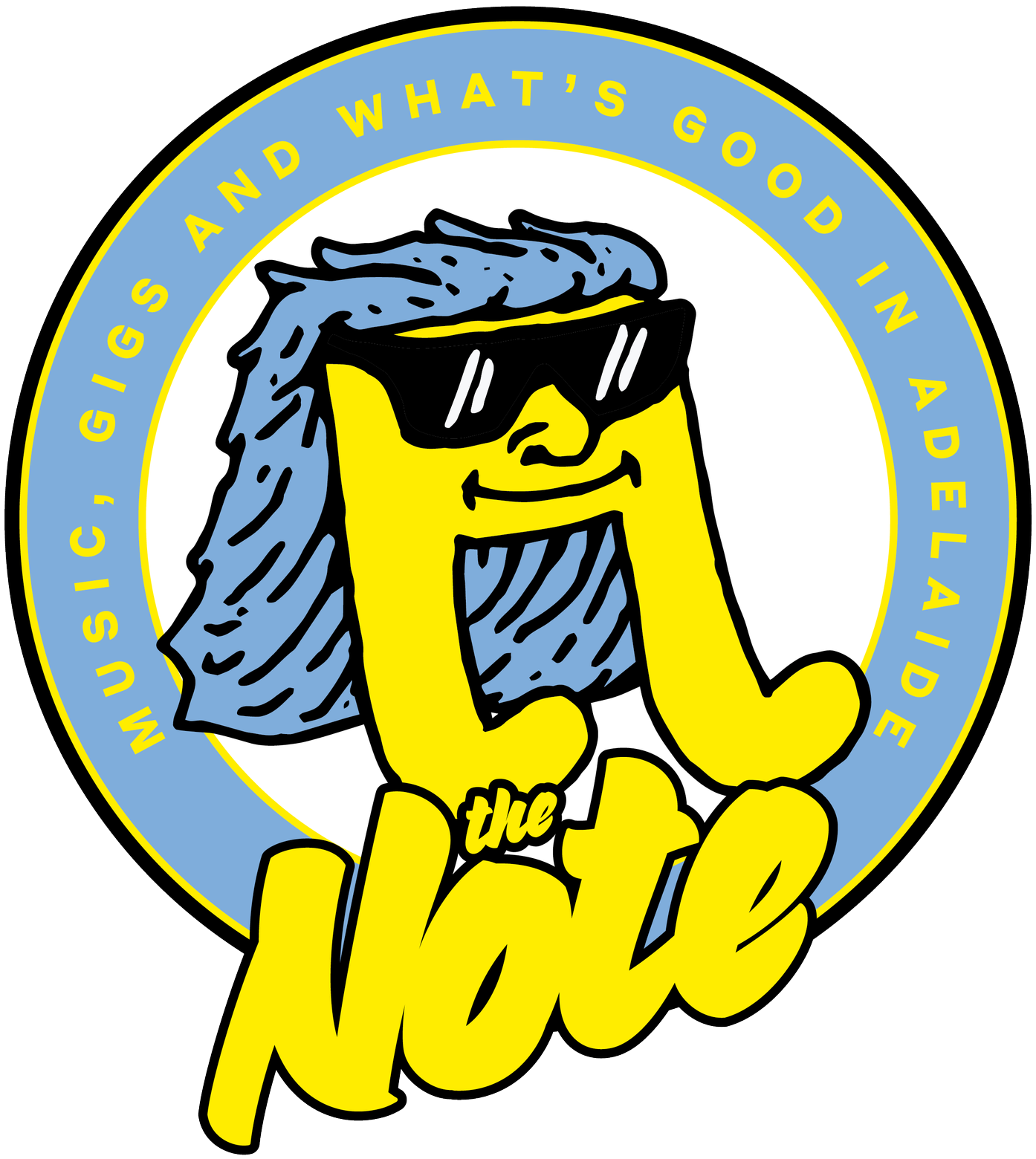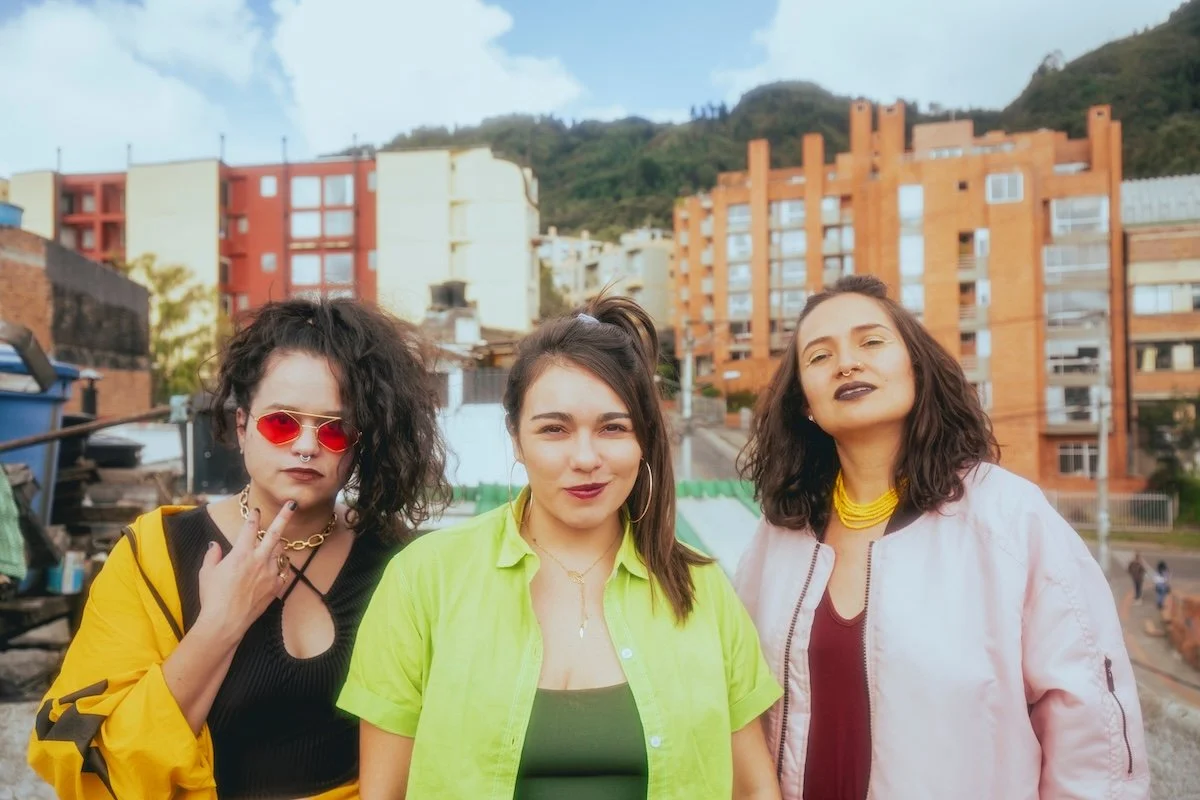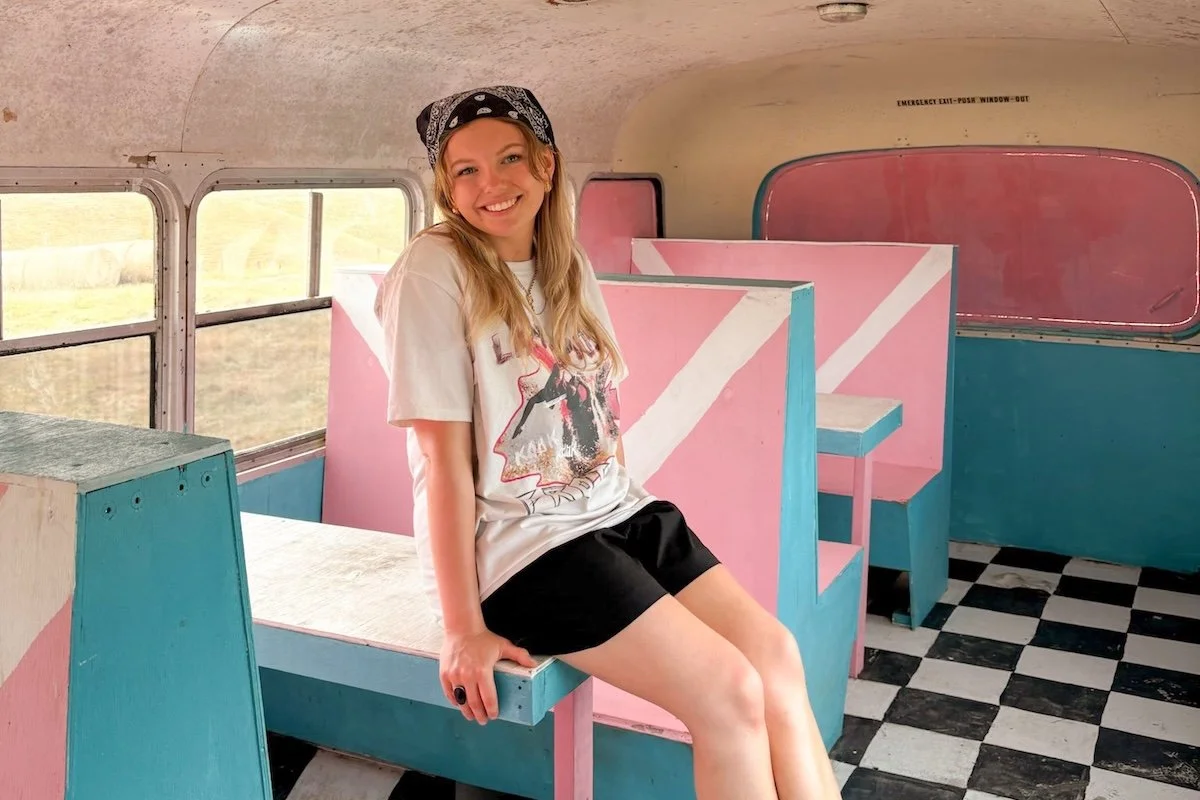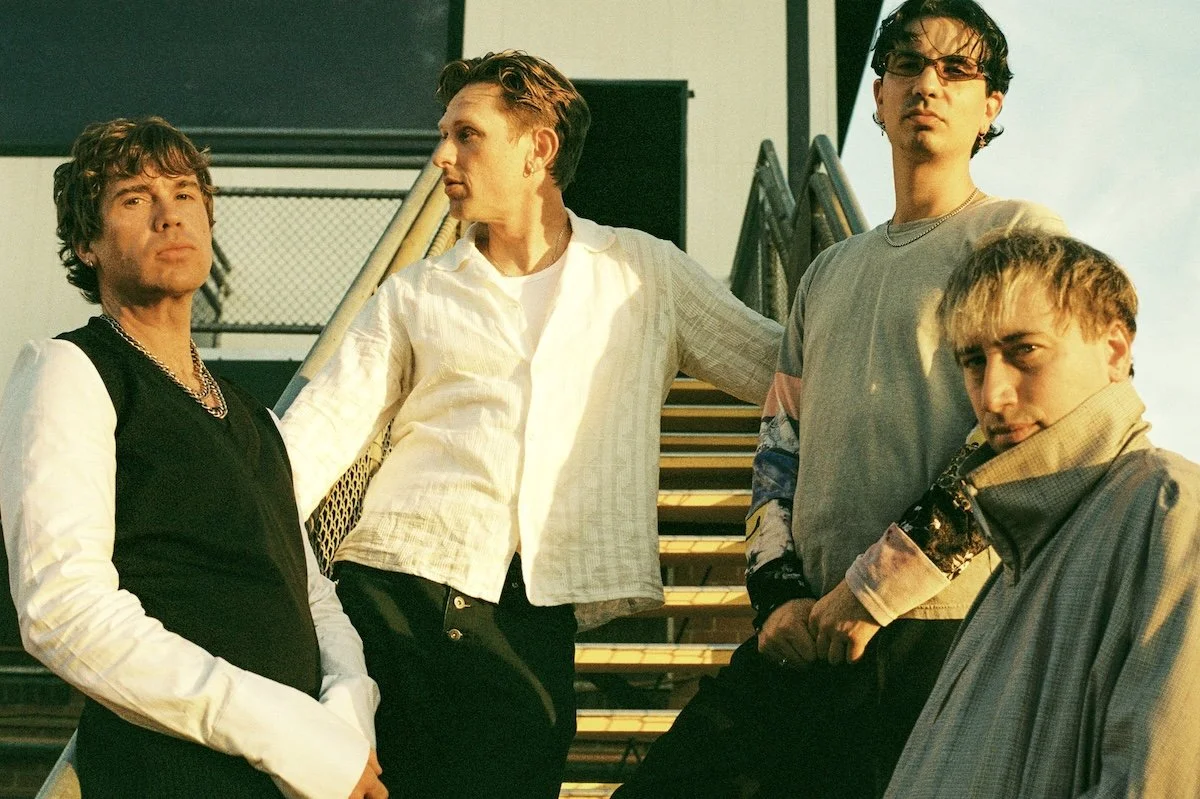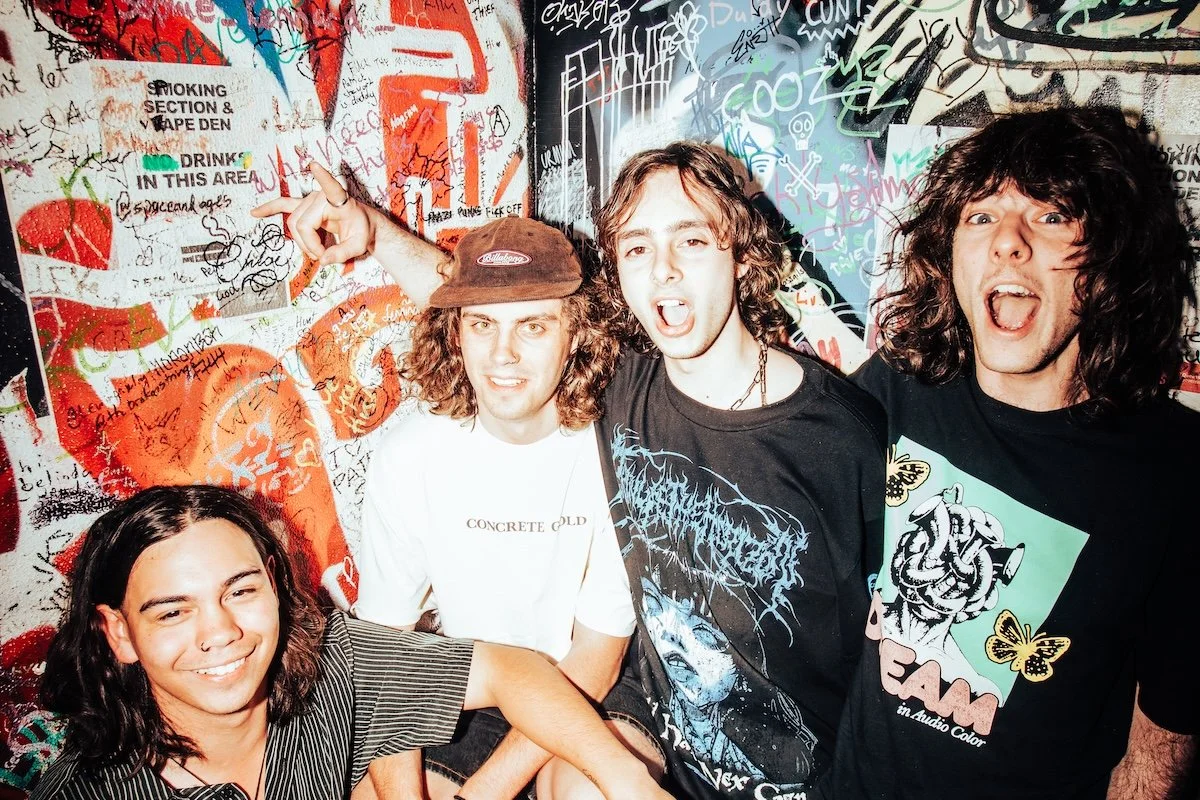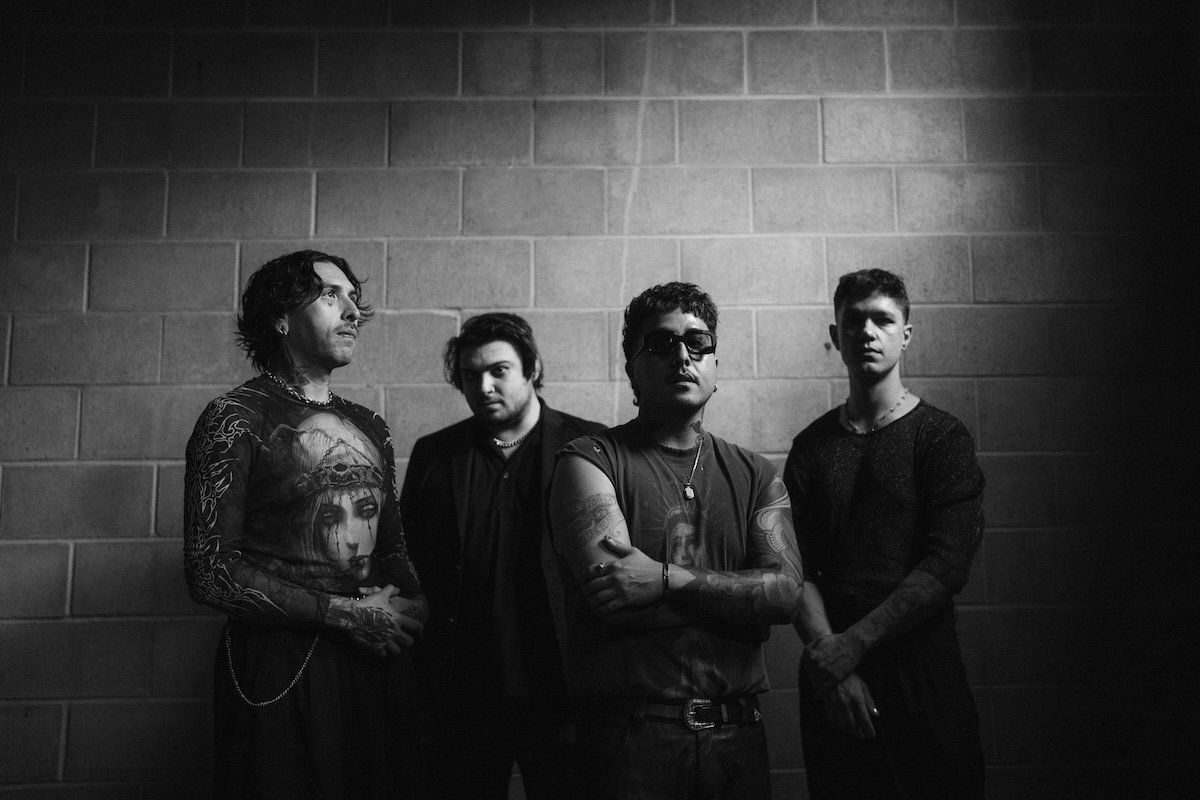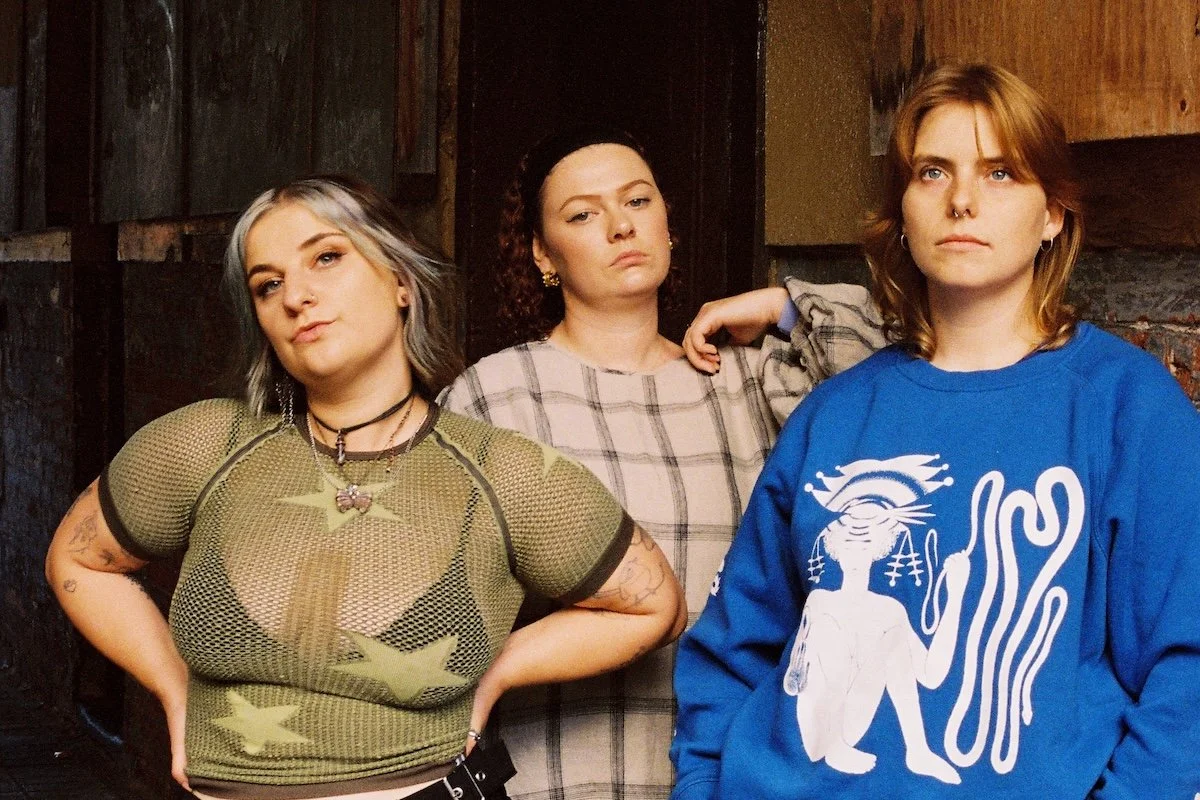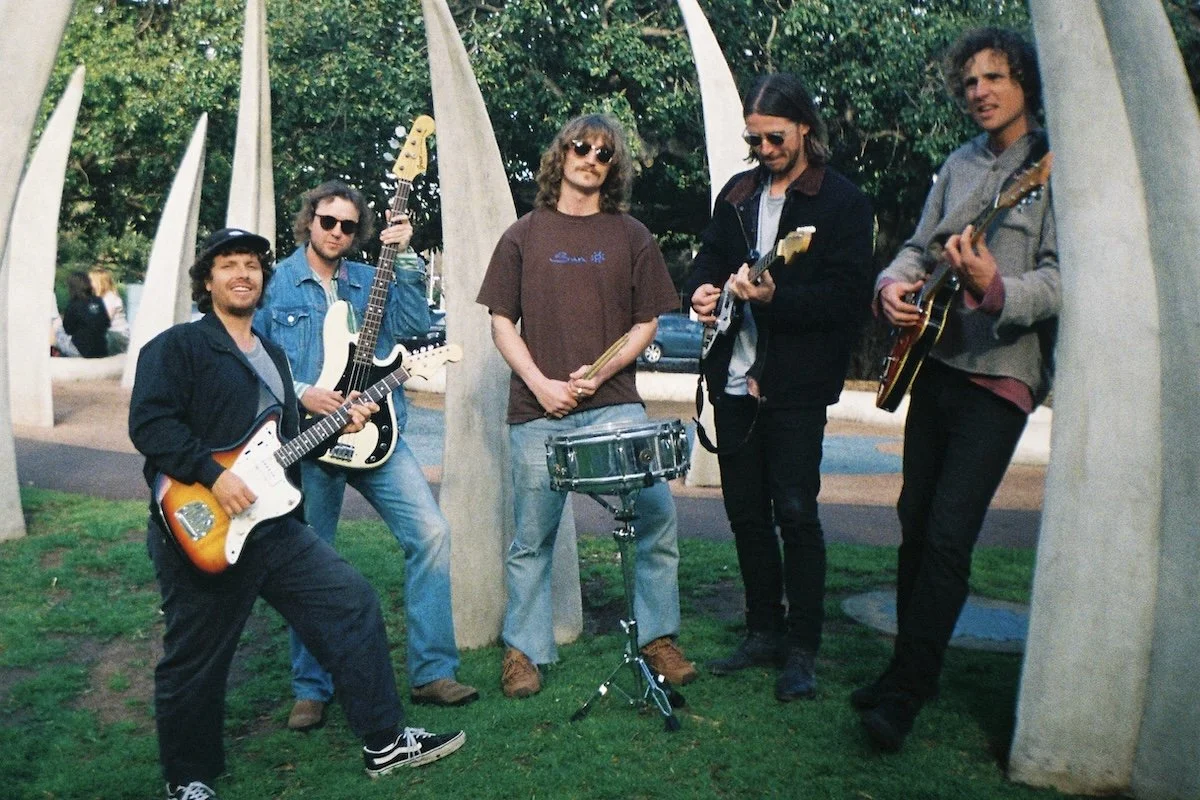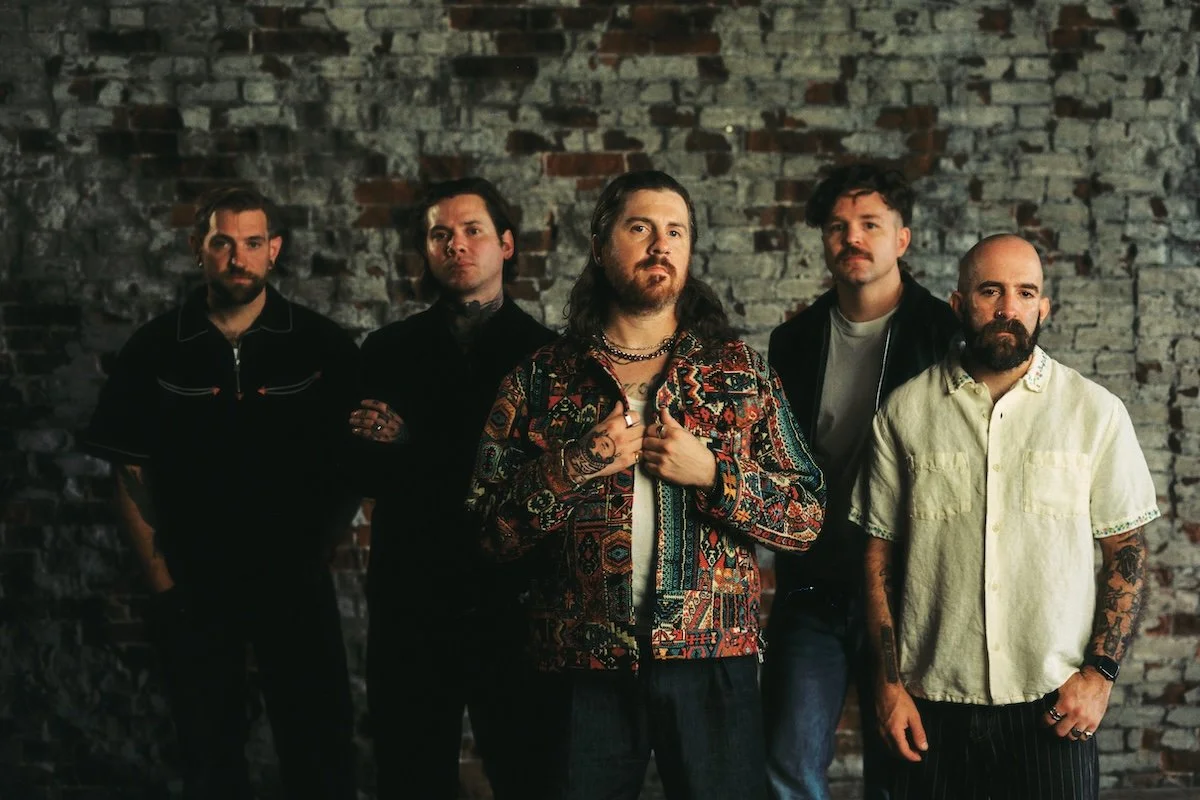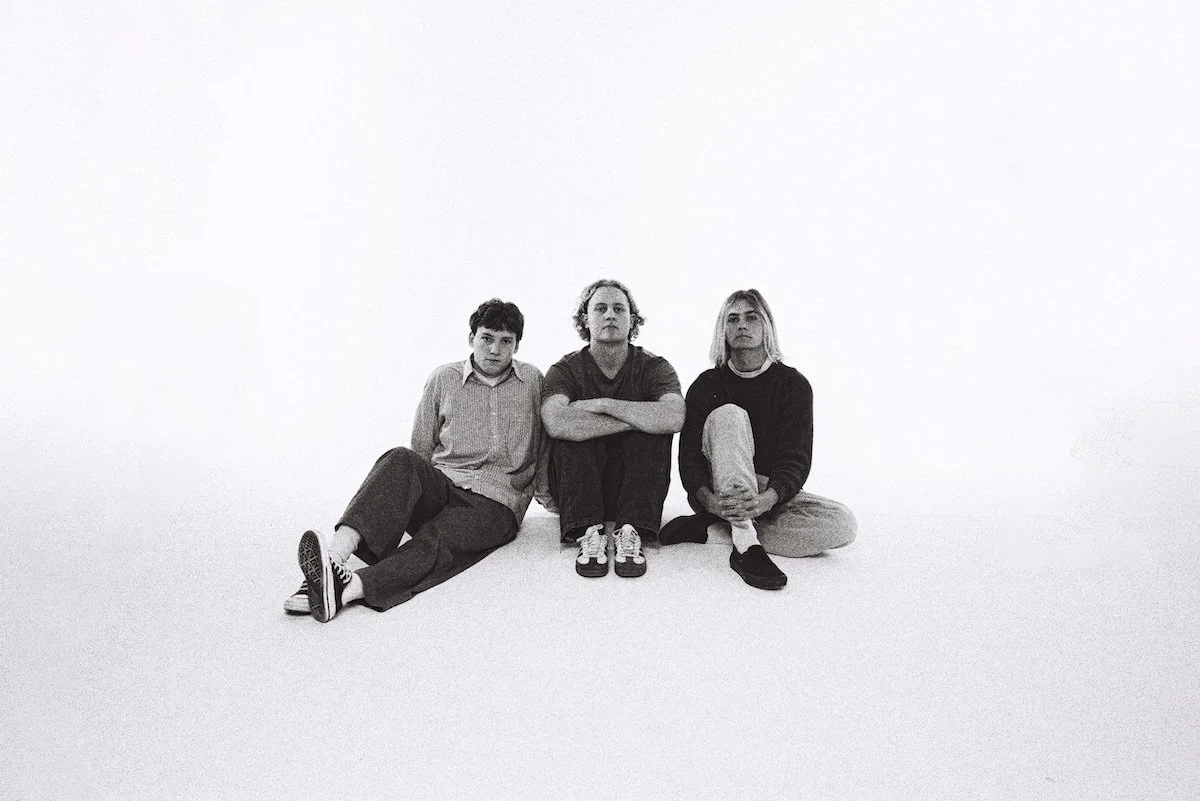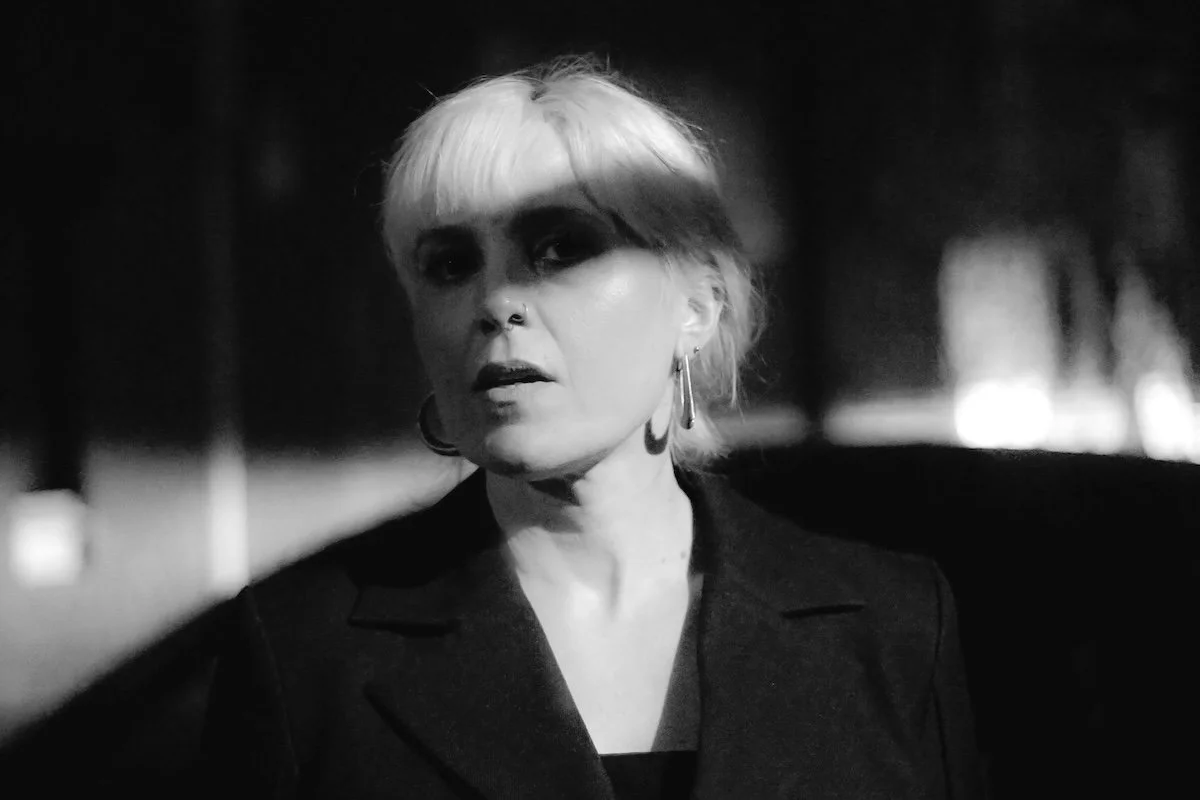From Bubblegum Punk To Industrial Pop: Inside the Evolving World of Cry Club
Genre chameleons Cry Club are hitting the road this November in support of their latest single, ‘This, Forever’. Ahead of their Adelaide visit, vocalist Heather Riley and guitarist Jonathon Took answered some questions for The Note about their latest release, the visual side to their music and supporting The Darkness.
Interview Tobias Handke // Image Marcus Coblyn
Going back to the very beginning, how did you two meet, and what was the impetus to form Cry Club?
Jono: We met on a plane to Tokyo on a uni trip! We had never met before, but were sitting next to each other and bonded over the show I was watching on my laptop and became instant friends. Years later, I knew I wanted to start a new project and Heather immediately came to mind. They came over to write a song and then here we are, however many years later!
Heather: We bonded so fast over shared interests on that Japan trip. We had the immediate same sense of humour and love of anime and music, [and] that initial show was Over the Garden Wall! Later I made this flippant post on Facebook about starting a cover band for The Cure or Siouxsie and the Banshees, and Jono got in touch again, like “Hey, remember when we were gonna write music together?”, and made it all happen from there.
Cry Club is often lumped in with certain genres, but there’s much more to your music than a simple label. How would you best describe Cry Club?
Jono: I describe each album era as specific things, like the first one is like a post-punk band playing pop songs. The second one is us doing the different types of rock music we grew up with, and now this new era is like if an industrial band got into electronic pop music. Honestly, I think it kind of reflects the modern sense of music consumption - most people aren’t listening to one specific thing anymore, it’s more of a badge of honour to be into as wide a range of music as possible. So I like to think that Cry Club sounds like if you’re listening to a playlist of your favourite songs by all different bands.
Heather: The core of Cry Club is really the two of us navigating all the fucked parts of our lives through whatever is most interesting to us in the moment. For a while, we used the term “bubblegum punk”, but lately I’ve been thinking of it as a kind of “post-pop-punk”? We take the camp theatricality of 2006-2007 emo pop punk and let ourselves spill over into as many other genres as we need to in order to properly convey the emotion we’re feeling in a certain song.
The group has released two albums: 2020’s God I’m Such a Mess and 2023’s Spite Will Save Me. What lessons did you take from creating the band’s first album into the writing and recording of the second?
Jono: When I think of lessons learnt, it’s mostly centred around the songs need to be right, you need to trust your gut and that it’s never worth half assing something. When people talk about “pop sensibilities”, what they’re often saying is that “the songs aren’t boring”, so Gab (Strum) really gave us a boot camp in that regard when he produced that record with us. Always guided by what the songs themselves are about, they need to be actually interesting enough to hold someone’s attention, regardless of genre or style.
Heather: Trusting our initial ideas was a very big takeaway from the first album to the second. It’s always been the songs where we ask ourselves, “Are we allowed to do this?”, that end up being the fan favourites. The more scared we are of something, the more it ends up being the frontrunner. Since the first album, it’s really been a big exercise in pushing ourselves towards the songs we’re uncertain about because that feeling of discomfort is where all the best shit is made!
Cry Club gained national airplay on triple j, but your music has also been played on European radio stations. That must have been a surreal feeling to know people across the world were actively listening to your music.
Jono: God, yeah! Always bizarre to think of its reach, especially considering how different culturally these places are to Australia. We bumped into the band Polaris on the way to Germany, and they mentioned that the German audiences could be quite brutal in their honesty - but when we got there, everyone was surprisingly super receptive to what we were doing.
Heather: Honestly, it’s been crazy to see the listenership grow across the world, and what people latch onto outside of Australia. Comparatively, we have such a small scene here, especially on the rock side of things, so it was amazing to get to tour on the other side of the world and feel like everything is brand new and completely different. People have such unique perceptions of what each song is about, which was my favourite part of playing the songs outside of Australia, relearning each song in a completely new way with that immediate live response from people.
Since the release of Spite Will Save Me, Cry Club have released three singles: ‘High Voltage Anxiety’, ‘For Your Health’ and ‘This, Forever’. The first two have a darker, industrial type tone to them. I read they were influenced by Nine Inch Nails, along with artists such as The Prodigy, Rage Against the Machine and Run the Jewels. What attracts you to these bands, and how have they shaped your recent releases?
Jono: I think with those bands mentioned, the throughline would be that they all manage to navigate presenting extremes in accessible ways. Nine Inch Nails may be the epitome of that, a deeply experimental band who sell out arenas. I think all three also play with a lot of crazy sounds, but also balance it out with a focus on physicality - like The Prodigy’s dance music focus and even Rage’s instantly moshable grooves. Run the Jewels also have that thing where if you listen to each element of the song, you’d imagine it’d be some experimental unknown band, but when all the pieces fit you’re blasting the shit out of it in your car trying not to speed. Haha.
Heather: Aside from the shared abrasiveness in all those artists, I think they’re all pretty straightforward in the point they’re trying to make. RATM and NIN in particular rarely mince words, whether it’s talking about an entire system that needs to change, or on the NIN side, it’s something internal about yourself that scares you. I’ve always been a little self-conscious that our lyrics aren’t “poetic” enough, but all of the big influences for this album have this soundscape quality to the music as well as lyrical storytelling, which I think gave us permission to go in hard on the design of the music rather than relying just on lyrics to inform each song emotionally.
Talk to us about your new single ‘This, Forever’. It’s a little different to the previous two releases and has a real upbeat pop vibe that’s reminiscent of your early material. Was there a conscious effort to revisit that part of your career, or did the song just evolve that way?
Jono: I think ‘This, Forever’ was less of a conscious “let’s do one like we used to” and more of a “we’re allowed to do what we’ve done before”. I think sometimes as artists you’ve got this tunnel vision about who you want to become that you can often forget or not acknowledge who you are. But also, even bands who are dark and envelope pushing in whatever ways also have some big pop songs in their catalogue, which are still fucking great (looking at The Cure here !).
Heather: The two of us listen to such a wide variety of music. More recently we’ve been on a metal/dance kick, but I think we feel so comfortable in pop when it comes to writing, we tend to drift back there quite often. There are some really specific emotions that pop just carries better than anything, so it’s back to that idea of what serves the song best, what captures our state of mind better than any other genre? It feels like a breath of fresh air, turning to pop for something just as dark and sad as the other songs, because it’s a great challenge in keeping everything light despite being emotionally quite difficult to talk about.
Lyrically, ‘This, Forever’ explores how, despite people having different views, we are all in this together and need to stick with each other. Was this inspired by personal experience or the current political climate?
Jono: I think there’s this thing now where everyone is being defined by the life they’re living on the internet - you’re one misinformed opinion away or a stray Instagram like from being screenshot and being “that person” in someone’s mind forever. So it’s this thing where we kinda struggle to extend people the kind of empathy we hope would be extended to us in any moments like that. Especially considering the rise of genuine hate groups in our country and abroad, purity testing people who are on your side is maybe a bit of a self-defeating thing!
Heather: There’s this common throwaway line of “leftist infighting” that people use while rolling their eyes, but over the past two years, I’ve really seen the tangible results of people who are all on the same side get so angry and critical of each other that they can’t get any work done. It’s such a difficult thing to navigate because tensions are so high, we all have such a huge stake in what’s happening politically – trans people becoming ideological punching bags on a massive scale, people in the music industry trying to end artists’ careers when they speak in support of Palestinians, violent racism and anti-immigration sentiments becoming mainstream. People on the right don’t care as long as they’re standing with people who hate the same as they do. It’s a massive wall we’re up against, and it gets so frustrating to see tiny nitpick differences in approach get blown out of proportion when the right doesn’t have those same concerns.
READ MORE: The Return of M.I.A.: Connection, Controversy and the ‘MAYA’ Era Reborn
Cry Club also created the music video for ‘This, Forever’. What was the idea behind the clip, and how important is the visual side of things when it comes to the band?
Jono: Visuals are a huge part of what we do. We grew up on music videos, so [we] still see them as a big part of us communicating who we are to our audience - even if they don’t hold the same place in the music industry they used to. With the ‘This, Forever’ video, it was born out of trying to evoke a blend between physical/digital/analogue worlds in a way that I feel like the song does. There’s guitars but they’re sampled and warped, so I want to see performance and projection glitching out in the video, for example.
Heather: Jono and I absolutely love the art of music videos. I used to come home from high school and sit in front of channel [v], VH1, MTV, etc, for hours and hours (around 2007-2010), and it all really stuck with me. One that sticks out is The Used’s ‘Bird and the Worm’ video, which had these kinds of tableaus of anxiety that are just as impactful on their own as they are in the narrative of the video. Being an indie band with basically no money, that “tableau” approach is the easiest way for us to squeeze the most meaning and emotion out of the tiny budget we have for each video. I also owe a lot to drama school, and the DIY elements we used during productions to evoke as much of the narrative as we could visually without having the money for realistic sets. We used a lot of live-feed camcorders to make surreal-looking backgrounds, and I’d always wanted to transfer that to music videos, [with] ‘This, Forever’ being the perfect vehicle for that!
Speaking of music videos, can you take us behind the scenes of the making of ‘High Voltage Anxiety’ and its meaning? It’s one hell of a trippy clip.
Jono: Honestly, that one was born out of both a love of horror movies and K-pop music videos (haha). Heather and I love horror movies; it’s so refreshing to watch things that just grab your attention so firmly, so that video was definitely a nod to those experiences. I had also been thinking about how K-pop music videos have a broad range of scenes and setups for a single song, so the ‘HVA’ video was an attempt to see how much we could replicate that sense of scale with a paper-thin budget.
Heather: Yeah, horror movies, K-pop, indie horror games and video essays are all folded into this video, especially. Horror is such an innovator across so many mediums, because budget feels like a welcome constraint rather than a hard limiting factor. Anxiety is a pretty universal experience, particularly among our audience, it’s safe to say (haha), so it was more about implying something more horrible that exists just out of frame than trying to tell a specific story.
We worked with stuff that made us anxious, either to watch or experience, and then built out from there. I’d always wanted to film something in the car park of a shopping centre we used to live near, so those shots of us covered in blood were just as anxiety-inducing to film because we spent the whole night looking over our shoulders in case security showed up to kick us out! I also particularly love the plastic bag shots. We could only do one take of those because we just put a plastic bag on my head and then hit record. I couldn’t see much but could feel everyone in the room holding their breath in fear the entire take because it looked so gnarly – don’t try it at home (haha).
The band has recorded, produced and engineered your last couple of singles. What’s the reason behind this type of DIY approach?
Jono: Ahead of making our second record, Gab had assumed we’d be making it ourselves considering how much we’d grown over making the first one – so now we’re in the spot to swing at this ourselves, it just makes sense. Especially considering the shift in the music industry post-COVID as well, if we want to be doing all the things we want to, like music videos, etc, we need to be taking on more responsibilities for the sake of being able to afford doing it all. So it’s a combination of it being a creative statement of confidence, but also a financial reality for a small band like us who still want to make big statements.
Heather: We’re control freaksssssss!!! We’ve always been heavily involved in every aspect of production, [so] it made sense to give it a go ourselves this time round. Being my first band/musical project, I feel like I finally have enough of a sense of how to communicate what I want something to sound like, and how to navigate that with Jono’s immense skill and patience. We balance each other so well that we can take risks and know instinctually if the other person is vibing with it or not, and we know deep down if we’ve made the right choice sonically. The process has been so much fun, probably the most fun we’ve had on any of the albums so far.
To celebrate the release of ‘This, Forever’, Cry Club are hitting the road in November, kicking off with a show at Adelaide’s Ed Castle. What memories do you have of playing in Adelaide?
Jono: For whatever reason, Adelaide has always accepted us with open arms. Everyone on the industry side kind of side-eyes Adelaide as a city that doesn’t buy tickets or whatever, but we’ve always received a huge amount of support from them. Funnily enough, the show we’ve got on has both Oscar the Wild and Mum Friends playing as supports, and we had played a show all together around four years ago, just after the 2020 COVID lockdowns. So it’ll be a bit of a full circle moment for us all (haha).
Heather: Adelaide has a scene that reminds me of Wollongong around the time Jono and I were going to uni there. It’s such a young, vibrant scene with people who are so invested in their music and their friends’ bands. We feel so at home and supported there; at this point, it’s kind of a crime to skip it both for our audience and for ourselves. People are so passionate and switched on, it feels like a big secret that we’re lucky enough to be in on. It really is kind of a shame [that] more bands don’t invest more time into connecting to crowds in Adelaide.
What can fans expect from a Cry Club live show?
Jono: I used to say something about it being a joyous thing to be in a group of people who could all connect to this thing - but now it feels so much more cathartic with this new music we’re releasing. Our shows are the moment where everyone is able to scream the frustration of this current moment out while also being a part of a tight-knit community built around accepting each other.
Heather: One really precious anecdote we’ve been told by a few different fans is that our shows were the first place they felt like they could dress in a way that affirms their gender – THAT is super special. So expect people expressing themselves however the fuck they want, making friends with the people around them, especially people at the gig solo. Having fun and looking after everyone, and screaming at the top of your lungs to forget about all the bullshit just for a little bit.
Something really funny we’ve noticed is that our audience is also really diverse age-wise; you’ve got non-binary art students, lesbians and rock dads all having a sick time together in the crowd, which means so much to me that we can connect across this unexpected range.
The past 18 months have also seen the band perform in Europe and support The Darkness. What were these experiences like?
Jono: Both absolutely crazy things. Playing in Europe was a dream. My first time in that part of the world, and also connecting with people who had never heard our music before but wanted to give us a try. Felt like connecting to the feeling when we started the band, convincing people we were worth their attention despite starting fresh on expectations.
The Darkness was a great tour to lead up to that with as well, that band is just joy personified in this really genuine way. They treated us so kindly, even more than smaller bands have, so it really showed us how you can still be really lovely regardless of any ego nonsense.
Heather: I was a little cautious going into The Darkness tour, having been a huge fan of them as well as big ‘80s glam rock bands. There’s a reputation in the genre for dirtbag rockstar behaviour that made me nervous about how our weirdo queer band would be received on stage and off. Thankfully, there was nothing to worry about. The Darkness were so encouraging, they gave us feedback on our shows and general advice almost every night. We found out they personally chose us for that tour, which was also really magical. Their audience was also super welcoming and kind, so it was all around a cool learning experience and we grew so much from it as a live band.
Europe was a challenge in the best way, going from venues like Horden Pavilion to playing in an abandoned WWII bunker underground, to like five people was whiplash, but again super valuable. We really love proving ourselves – trying to convince a crowd that they should care about us is the quickest way to improve! We had a group of people come to one of the early shows on that tour and then travel to another city later on and see us again. That alone made everything worth it.
Finally, what does 2026 have in store for the band?
Jono: Just more. We’re super excited to show people what we’ve been working on, and [we] can just hope it also means we continue to get more and more opportunities to connect with the people who our music might matter to.
Heather: More music, more shows, weirder music, weirder shows! We’ve been experimenting with different mediums like writing the themes for DND twitch shows, voice acting, video games, so just working on anything and everything we come across and funnelling it back into our creative process.
Catch Cry Club performing at Ed Castle on Friday 7 November. Tickets on sale via moshtix.com.au.
